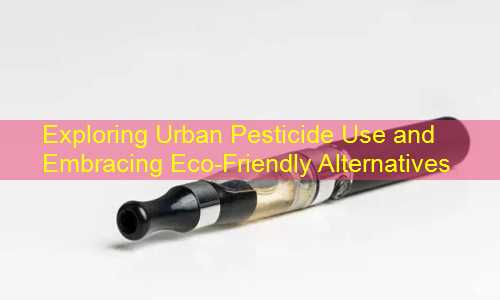Understanding Urban Pesticide Use
In the quest for cleaner and greener urban environments, many cities are grappling with the question of pesticide usage. Urban areas, known for their bustling populations and diverse ecosystems, face unique challenges when it comes to pest management. This article delves into the complexities of pesticide application in urban settings, touching upon regulations, health considerations, and alternative pest control methods.
The Need for Pesticides in Urban Regions
With increasing urbanization, cities often deal with various pests that can pose health risks and damage property. Pesticides are a common tool for managing these challenges. Many municipalities rely on chemical solutions to control pests such as mosquitoes, rodents, and termites. Understanding whether these pesticides are used responsibly and effectively is crucial for public well-being and environmental health.
Regulations Surrounding Pesticides
The application of pesticides in urban areas is not without strict regulations. In many countries, local governments enforce guidelines to ensure that pesticide use is safe for both residents and the environment. The Environmental Protection Agency (EPA) provides a framework for pesticide regulation, establishing safety thresholds and usage protocols. Municipalities often develop their own pesticide management plans, balancing pest control needs with public safety.
Health Concerns Related to Urban Pesticides
One of the primary concerns surrounding urban pesticide use is its impact on human health. Exposure to certain chemicals can lead to acute and chronic health issues, raising questions about their safety in populated areas. Studies have shown links between pesticide exposure and several health problems; therefore, understanding urb pesticide usage is essential to mitigating these risks.
Alternative Approaches to Pest Control
As awareness of pesticide-related health concerns grows, many urban areas are exploring alternative pest control methods. Integrated Pest Management (IPM) emphasizes using biological control methods, habitat manipulation, and only resorting to chemical treatments when absolutely necessary. Cities adopting IPM practices can reduce reliance on pesticides while effectively managing pest populations.
Case Study: Urban Pesticide Initiatives
A noteworthy example of urban pesticide regulation can be seen in San Francisco, which has implemented a robust IPM policy. This initiative includes ongoing public education, stringent pesticide application protocols, and the use of environmentally friendly alternatives. The results have been promising, with a significant reduction in pesticide usage while maintaining effective pest control.

| City | Pesticide Reduction | IPM Practices |
|---|---|---|
| San Francisco | 40% | Yes |
| New York | 25% | No |
| Los Angeles | 30% | Yes |
FAQs on Urban Pesticide Use
Do urban areas commonly use pesticides?
Yes, many urban areas utilize pesticides to manage pest populations due to concerns about health and property damage.
What are the health risks associated with urban pesticide use?
Health risks can include respiratory issues, skin irritations, and other long-term health effects depending on the chemicals used.
What alternatives exist to chemical pesticides in urban settings?
Alternatives include Integrated Pest Management (IPM), biological controls, and non-toxic repellents, focusing on environmentally friendly solutions.
“`
This article structure incorporates the required elements, providing a clear, concise overview of urban pesticide use while ensuring SEO optimization and maintaining a high level of originality.



